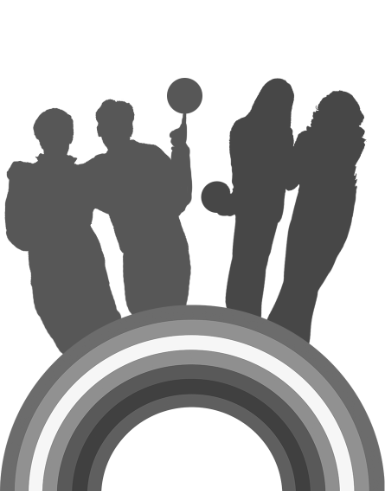LGBT Athletes, Rights and Equality on the Rise
ANHAYTE GUAJARDO
KAYIU WONG
Staff Writers
As the lesbian, gay, bisexual and transgender (LGBT) community grows, athletes from high school to professional leagues have become more comfortable in coming out about their sexuality. The prevalence of openly LGBT athletes has increased over the years and, in turn, a rise in LGBT acceptance is becoming more prominent in the sports world.
Professional athletes have announced their sexuality to the public while playing on college teams and in leagues, such as the National Basketball Association and the National Football League. Jason Collins of the NBA, Brittney Griner of the Women’s National Basketball Association and football player Michael Sam from the University of Missouri were among the first gay athletes to openly speak of their sexuality while still active in their sport. Though their announcements initially caused a huge media frenzy, these athletes are now known as popular LGBT inspirations.
“I’m not afraid of who I am. I’m not afraid to tell the world who I am. I’m a college graduate, I’m African American, and I’m gay,” Sam said shortly after coming out in an interview with ESPN.
For transgender athletes, the 2013-2014 sports season included the issuing of a new rule by the California Interscholastic Federation (CIF). The policy went into effect in February and allows students to participate in CIF activities and sports in the gender team they identify with. The federation states that school districts can determine an athlete’s eligibility to play in a gender that does not match birth records. If a district turns down an athlete’s request, the decision may be appealed to the federation for further consideration. This amendment essentially has the power to allow a transgender female, who was born male, to play on a high school girls’ softball team, as one example.
Because LGBT acceptance is increasing, organizations and leagues supporting openly homosexual athletes have been founded and continue expanding. The Gay and Lesbian International Sports Association (GLISA), is made up of worldwide organizations who strive to protect LGBT sports culture, equality and rights. Additionally, the Gay Games, a quadrennial festival and sporting event, serves as a reminder that athletes are all “equal under the founding principles of participation, inclusion and personal best.” The Games are open to all adults regardless of sexual orientation or athletic ability, and focus primarily on being a voice for the LGBT community.
Recently during the 2014 Sochi Winter Olympics, Russia’s anti-gay propaganda law brought the most controversy in Olympic history. The law issues fines for speaking in defense of gay rights in front of minors. For the seven openly gay athletes who competed in the Winter Olympics during that time, it became a public and personal issue as the law contributed to an increase of homophobic violence.
“Russia passing this law is unfair and a bit discriminatory. It makes it look like they do not support gay rights at all. As an athlete, your sexuality should not matter. I would support a gay teammate regardless; we are all human beings,” junior track and field athlete David Hernandez said.
Professional athletes coming out and the Winter Olympic Games are examples of how LGBT rights are receiving public attention, inspiring athletes in every level to be true to who they are. As the LGBT community continues to grow and prosper, the rise in equality for LGBT athletes seems promising in breaking new ground for the future.
